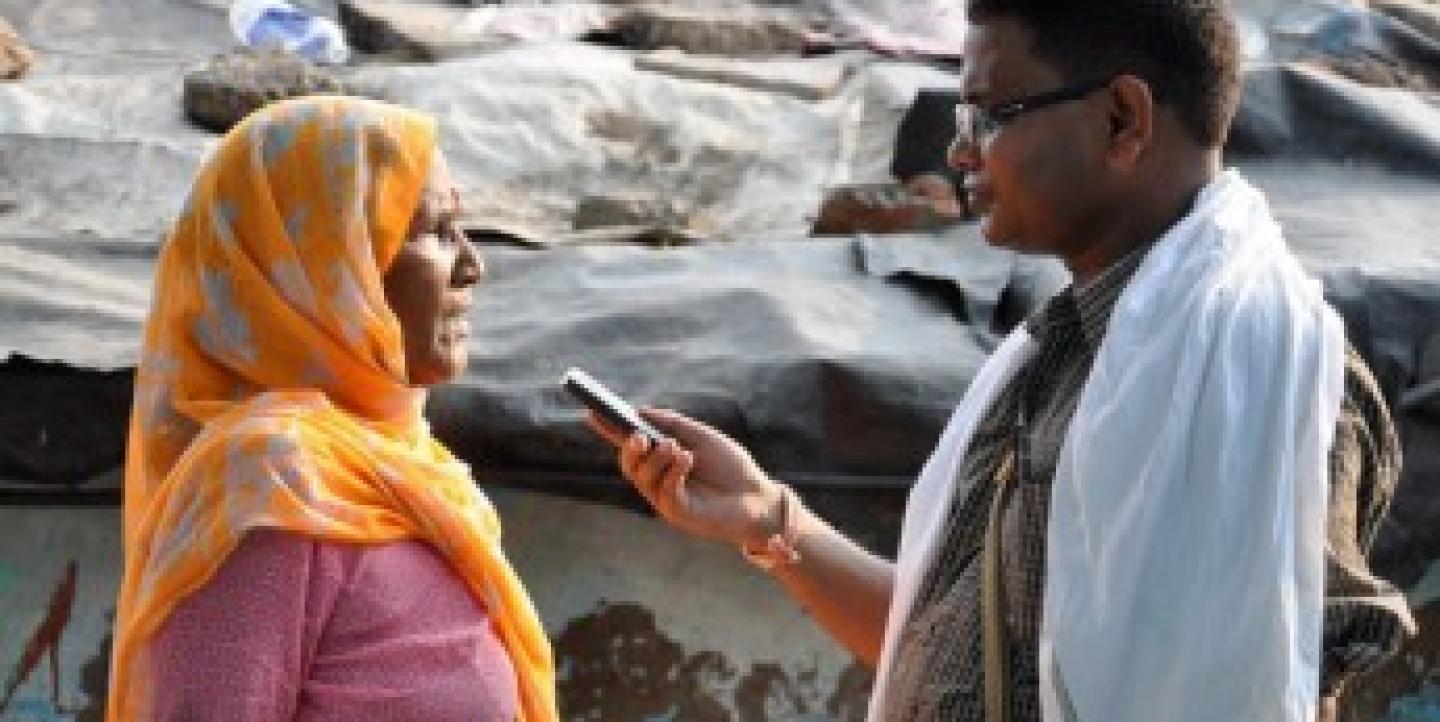Voice technology has tremendous potential for engaging citizens in news.
That was the thinking behind the meeting – called Turn Up the Volume: Bringing Voice to Mobile Citizen Journalism – which the International Center for Journalists organized this month at the Rockefeller Foundation’s Bellagio Center in Italy. We brought together a diverse group of journalists, technologists and media entrepreneurs from around the world to look for the best models for using voice technology to engage citizens in news – and to identify needed improvements to the technology.
The idea came from Knight International Journalism Fellow Shubhranshu Choudhary’s project, CGNet Swara, in India. CGNet Swara has shown how mobile phones can enable people living outside population centers to share stories and concerns that are often absent from traditional news reports. Swara uses Interactive Voice Response (IVR) technology so that people can simply call a phone number, press “1” to leave reports and press "2" to listen to reports, making two-way news distribution possible. Voice reports are then vetted by moderators and made available to mainstream media and public officials through a website.
For these isolated people, voice technology is game changing: Since it relies on the spoken word, people don’t need to be able to read or write in order to contribute content. This is especially important in places like India, where news media don’t produce content in the rural and tribal languages spoken by many. Unlike text, voice is language-agnostic. And most people in the world have access to a mobile phone. This means mobile phones give more people the chance to contribute content.
To engage disconnected people with mainstream news, voice-based mobile is the way to go. But with all its potential, there are technical hurdles that prevent journalists and news organizations from using this technology as often as they could.
We brought together two dozen mobile voice and citizen engagement pioneers to figure out how to take mobile voice engagement to the next level. Attendees came from a wide variety of backgrounds and regions. They included Soud Hyder, a web and social media project manager for Al Jazeera in Qatar; Siok Sian Pek-Dorji, executive director of the Bhutan Centre for Media and Democracy; Umar Saif, chairman of the Punjab Information Technology Board in Pakistan; and Izabella Moi, coordinator and editor of newspaper Folha de Sao Paulo's citizen media blog Mural.
The group identified three developments that would help tap the full potential of mobile voice for citizen engagement. They are:
Platforms that talk to one another and are easier to use
There are already voice applications out there, like Freedom Fone and Swara, but they are often not easy to implement (for instance, many are Linux based) for non-techie users. What’s more, voice applications, and many of their non-voice peers, function in technology silos that cannot speak to one another. This is fine if you want to use just voice or just SMS, but what if your radio station wants to use voice, SMS, mapping and social media in one interoperable suite? The solution is to customize the existing platforms, not to necessarily build new ones.
Data and analytics for voice
What if you want to easily categorize a voice report by topic? Or geolocate a voice report on a map? Or autotranscribe and publish to Twitter? Or analyze demographic or topical data within aggregated voice reports? Think of the power of being able to add analytics – the ability to detect meaningful patterns in data -- to voice, and the impact it could have on understanding and reaching populations of people most dependent on voice for news.
Collaboration among mobile voice pioneers
Many people in the group had worked for years without coming face to face. This meeting connected them to networks of people just getting their feet wet with mobile voice. We developed action plans to tackle some of the challenges identified at this meeting. We look forward to sharing more about these once they’ve broken ground. They include cracking the code to add analytics to IVR platforms, geolocating voice and connecting it to maps and FrontlineSMS, creating a new tool for engaging citizens in editorial tasks that journalists often do not have time for, like photo verification and interview transcription for pay and experiments with voice in Brazil, Bhutan and Mali. Stay tuned.
It was amazing to gather a select group of pioneers and innovators, and watch them lay a broader foundation for engaging new voices in news through mobile technology. Our next goal is to grow this network, and help others in the news ecosystem adopt voice technologies to engage people who are left on the periphery of news.
Photo courtesy of Knight International Journalism Fellowships.
Ben Colmery is the deputy director of ICFJ’s Knight International Journalism Fellowships program.

